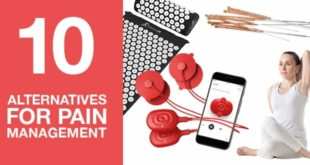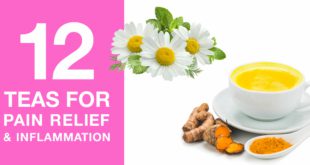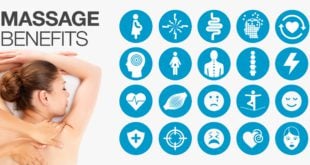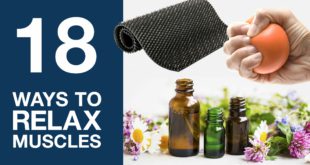Below we’ve compiled a list of 10 blends you could try supported by recent studies which highlight their effectiveness:
1. Green Tea
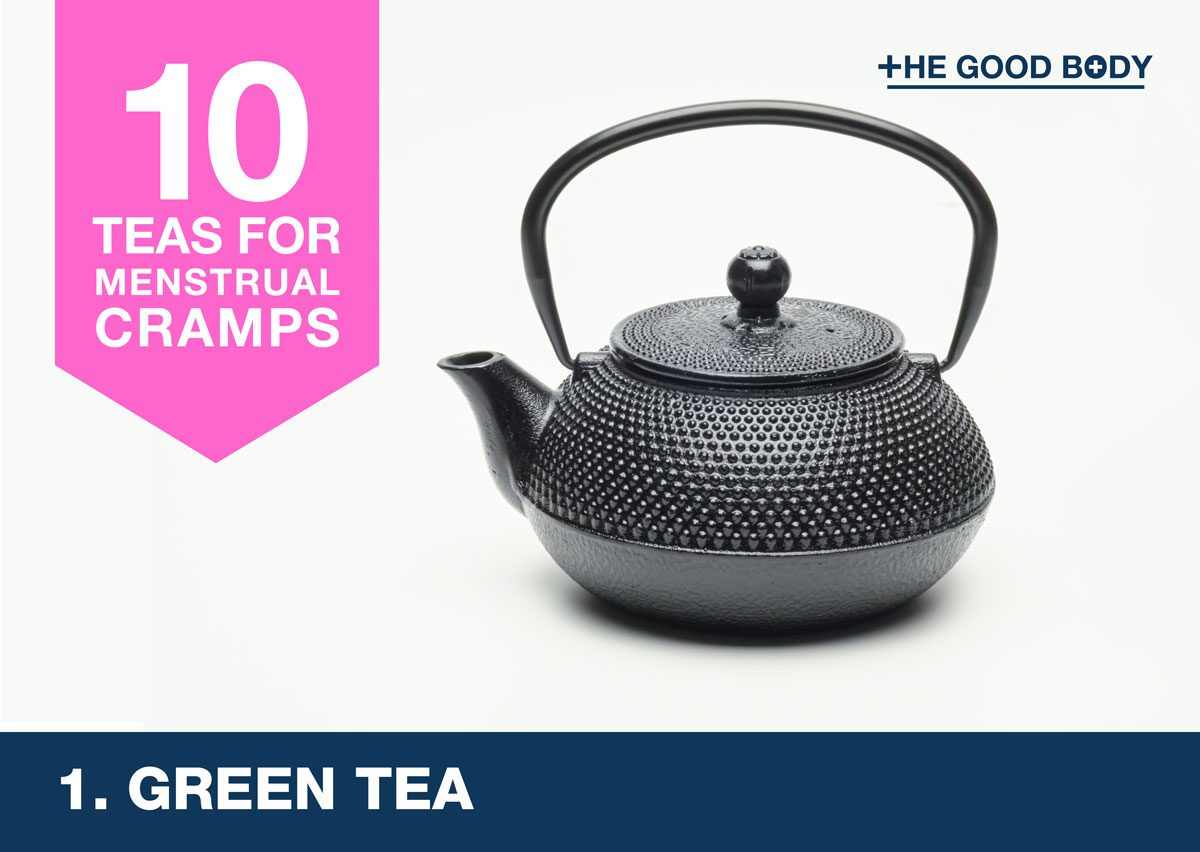
Where to begin with green tea?! It’s been extensively researched and is shown to work wonders for women when they’re suffering from dysmenorrhea.
The University of Shizukoa in Japan discovered one of the major components of this tea is something called ‘theanine’ which is essentially an amino acid that helps you relax.
And there’s more:
Within this tea are micronutrients called polyphenols, pretty common in plant-based foods.
There’s a particular one called EGCG (epigallocatechin-3-gallate) that is anti-inflammatory, helping to combat menstrual cramping.
World-renowned doctor and scientist Dr William Li explains that EGCG makes green tea a ‘powerhouse’ for your health and wellbeing!
That’s not all:
A cross-sectional study shared by the BMJ involving 1,183 reproductive-aged women in China analyzed the link between tea drinking and its effects on cramping.
Participants were asked if they experienced menstrual bleeding over the past 12 months and to grade the severity of their cramps.
Researchers concluded that drinking green and oolong tea led to a substantial reduction in pain.
2. Peppermint Tea
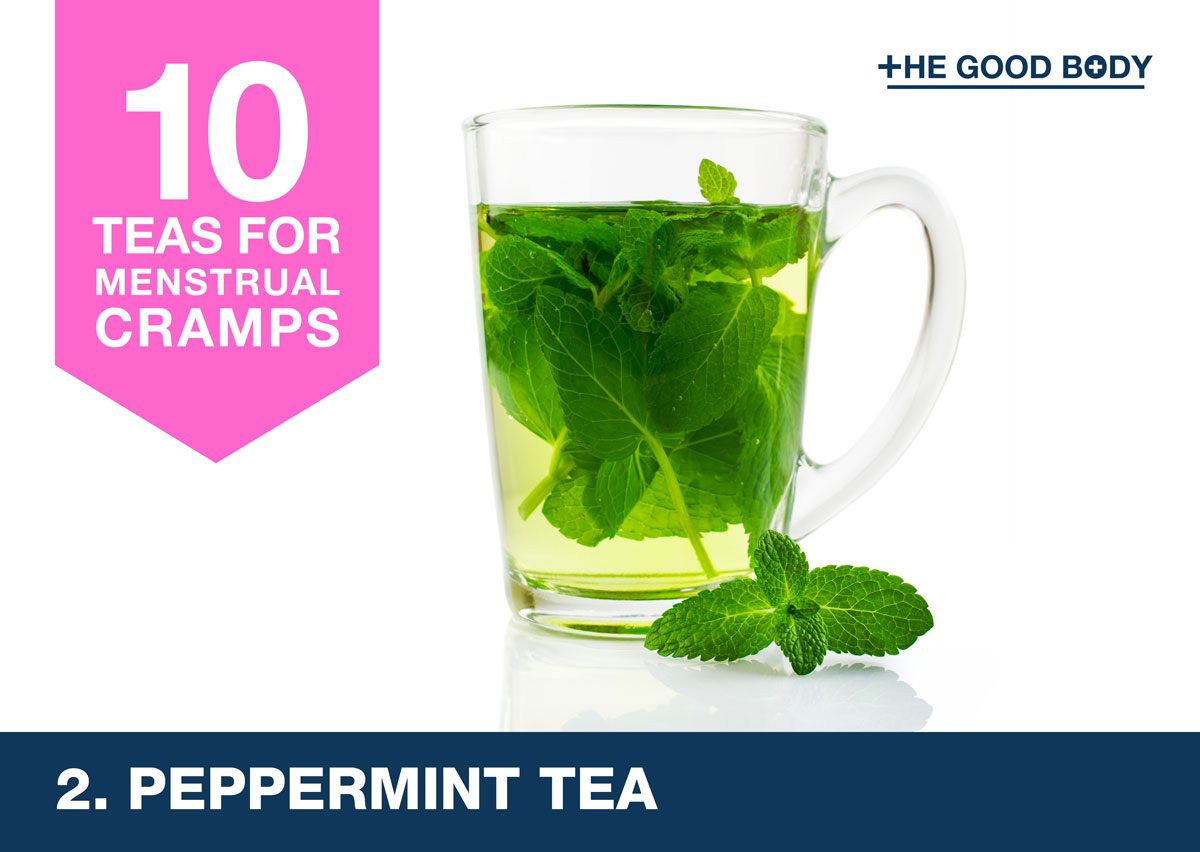
The menthol found in peppermint tea acts like a mild anesthetic, blocking pain and nausea signals by numbing the nerves in your gut.
It is also a relaxant, causing the valve between your stomach and oesophagus to relax so any trapped wind escapes upwards.
You might hear a little burp as the pressure decreases, but you’ll feel a whole lot better afterwards and hopefully cramp free.
Evidence published in 2016 also uncovered the direct effect it can have on period pains.
Though not reducing bleeding (if you want to ease your flow, take a look at cinnamon tea), pain intensity and duration were lowered significantly.
3. Ginger Tea
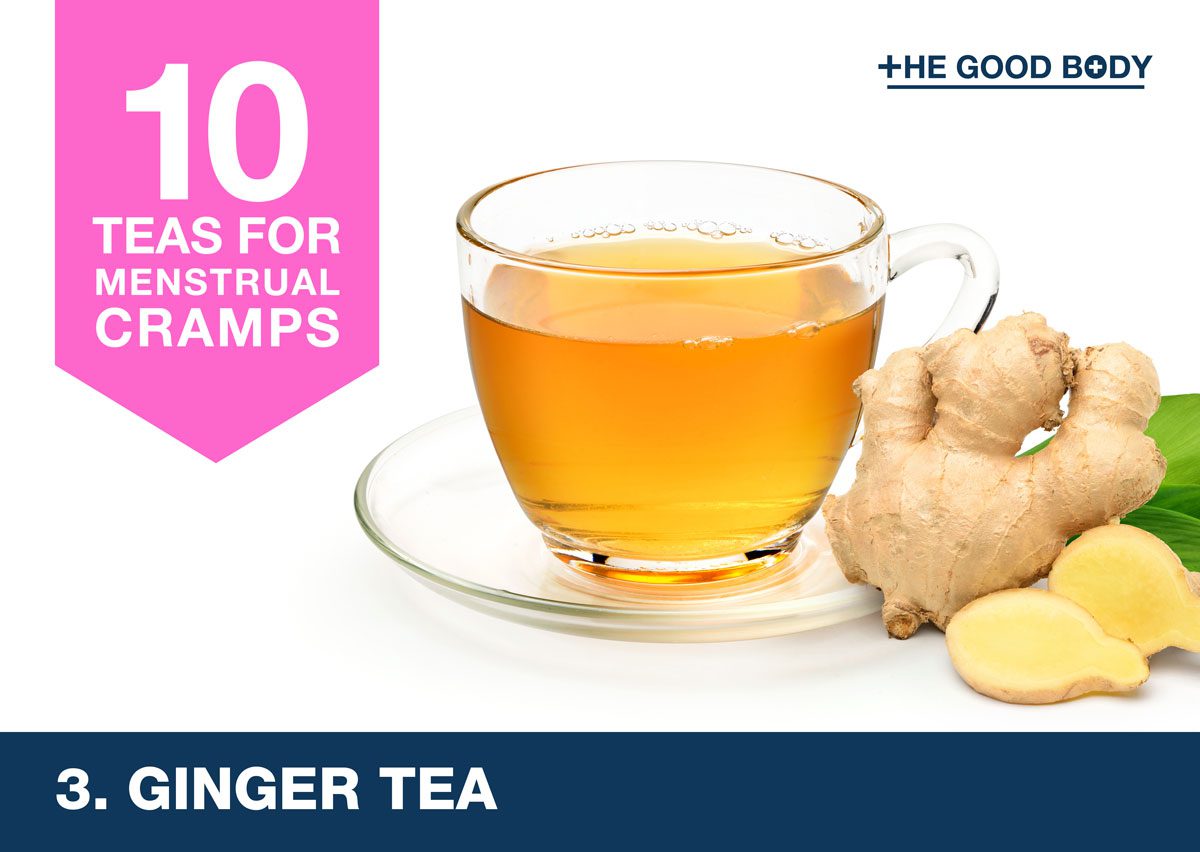
Ginger is one of the best herbal teas for period cramps.
The pain-relieving properties of ginger has been evidenced, in a study of 150 women with severe menstrual pain, as being on a par with ibuprofen and other prescriptions NSAIDs (non-steroidal anti-inflammatory drugs).
Another randomized control trial, involving 120 students from Shahed University in Iran, examined the effects of ginger on moderate or severe primary dysmenorrhea.
Women took 500mg of ginger for the first few days of their menstrual cycle.
It was quickly discovered that ginger significantly reduced the pain associated with cramping.
4. Fennel Tea
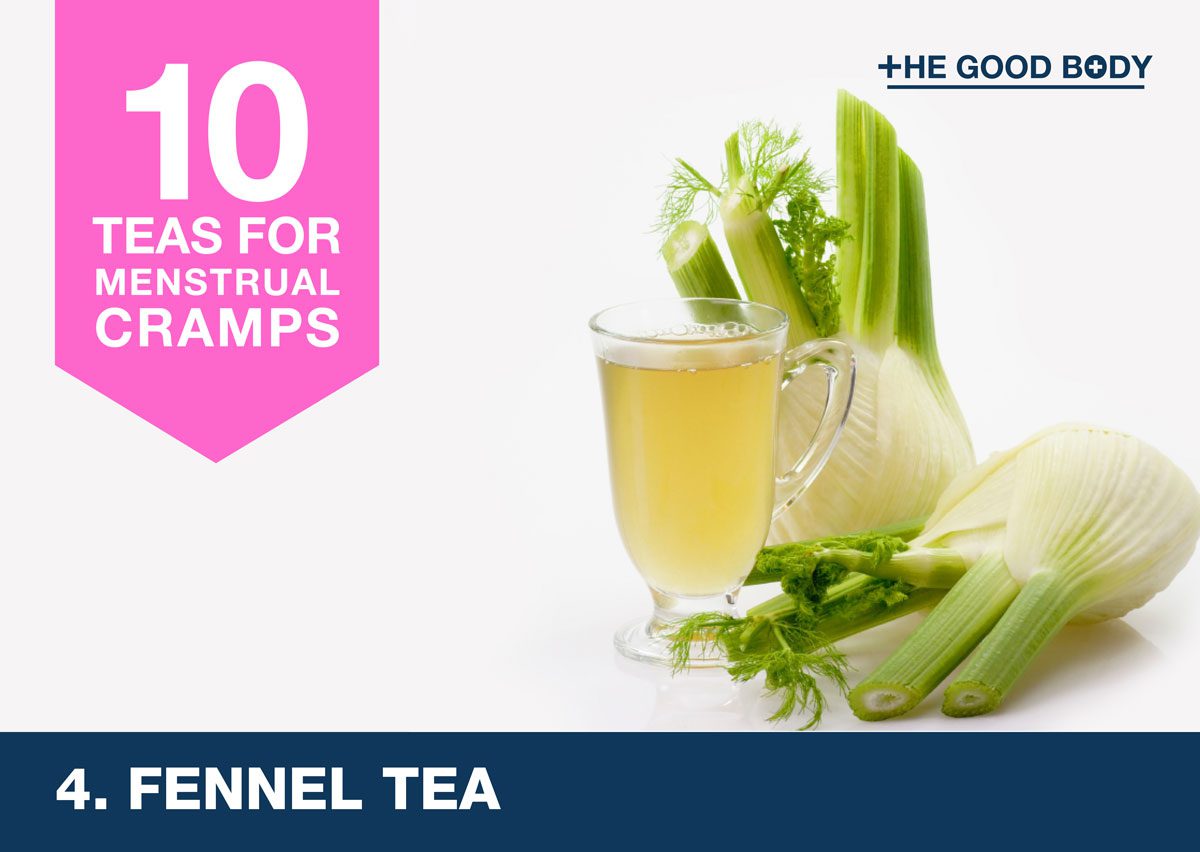
If you’re suffering with menstrual cramps, you need to add fennel tea to your shopping list.
This is down to the fact it contains ‘anethole’, which is a compound with an anti-spasm effect.
A study from 2012 involving sixty females receiving either fennel or a placebo, revealed that fennel is an effective herbal drug to treat cramping.
Interestingly, back in the Middle Ages, fennel was hung over doorways to protect homes from evil spirits.
Today it’s used to treat many ailments. Herbalists believe fennel can particularly work wonders for digestion.
It helps to relax muscles in the gastrointestinal system, which in turn cuts down gas, bloating and stomach cramps.
5. Chamomile Tea
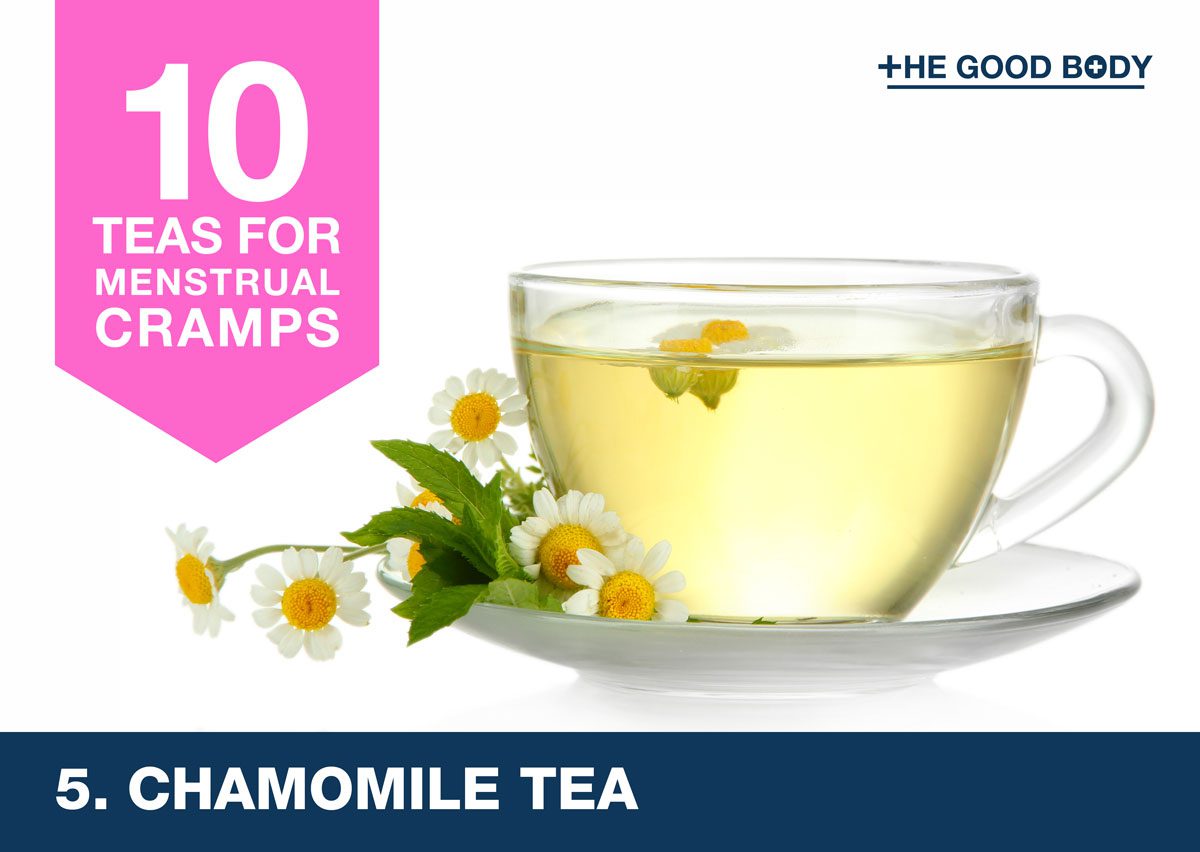
Chamomile tea is well known for its ability to place people into a calm state, something of a must when you’re menstruating, but it also has the potential to do so much more.
A study from 2010, published in the Iranian Journal of Obstetrics, Gynecology and Infertility, unearthed that drinking chamomile tea for a month could lower menstrual cramp pains substantially.
Participants that drank two cups of chamomile tea a day, one week prior to their period, also experienced a reduction in anxiety and distress that unfortunately normally goes hand-in-hand with period pain.
6. Raspberry Leaf Tea
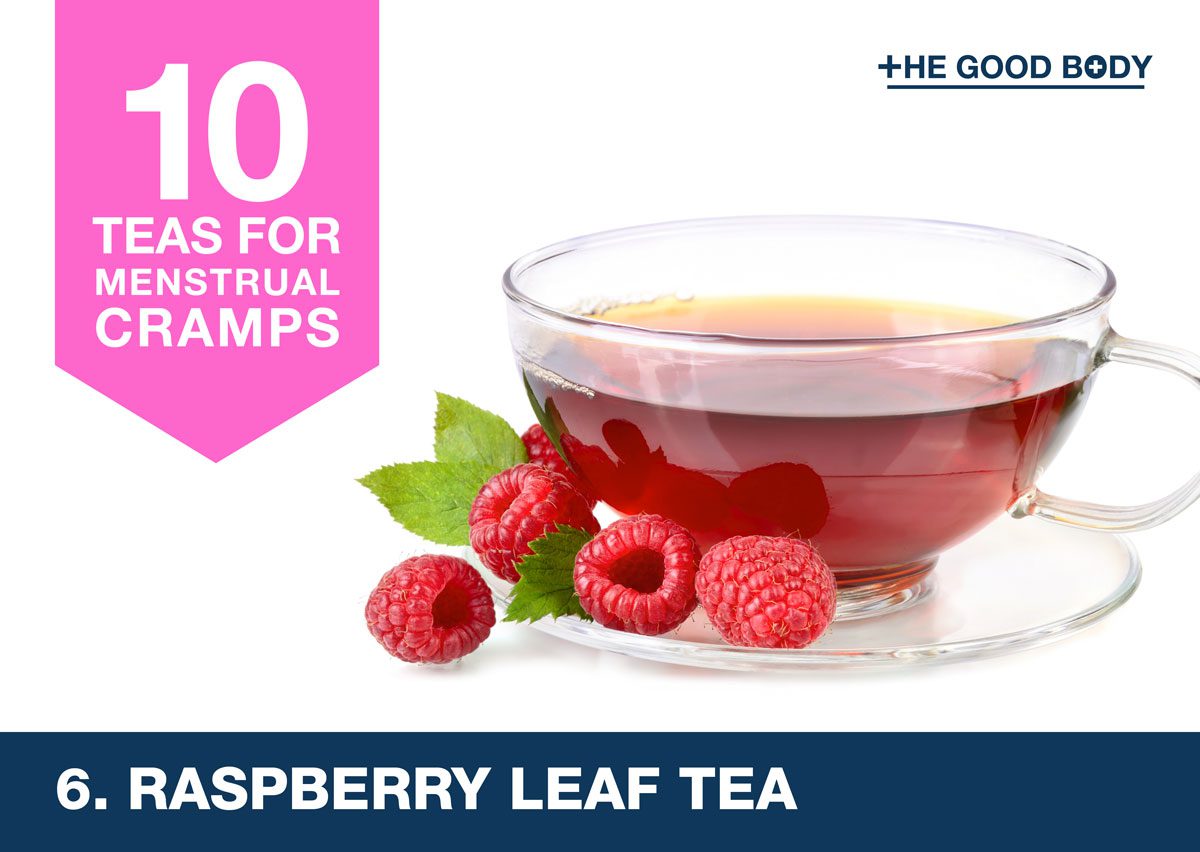
Lots of research and anecdotal evidence exists that all points to raspberry leaves helping to relieve many premenstrual symptoms (PMS) like vomiting, nausea, diarrhea and most importantly, cramping.
That’s because red raspberry leaves contain ‘fragarine’, a plant compound that aids the toning and tightening of muscles in the pelvic area.
It consequently prevents the spasm of these muscles. When your muscles go into a spasm, that’s when you feel that painful cramping sensation.
Another study published by the European Medicines Agency has provided further evidence that raspberry tea has anti-inflammatory properties to help with reducing the pain that can occur when you’re suffering with period cramps.
7. Ginkgo Biloba Tea
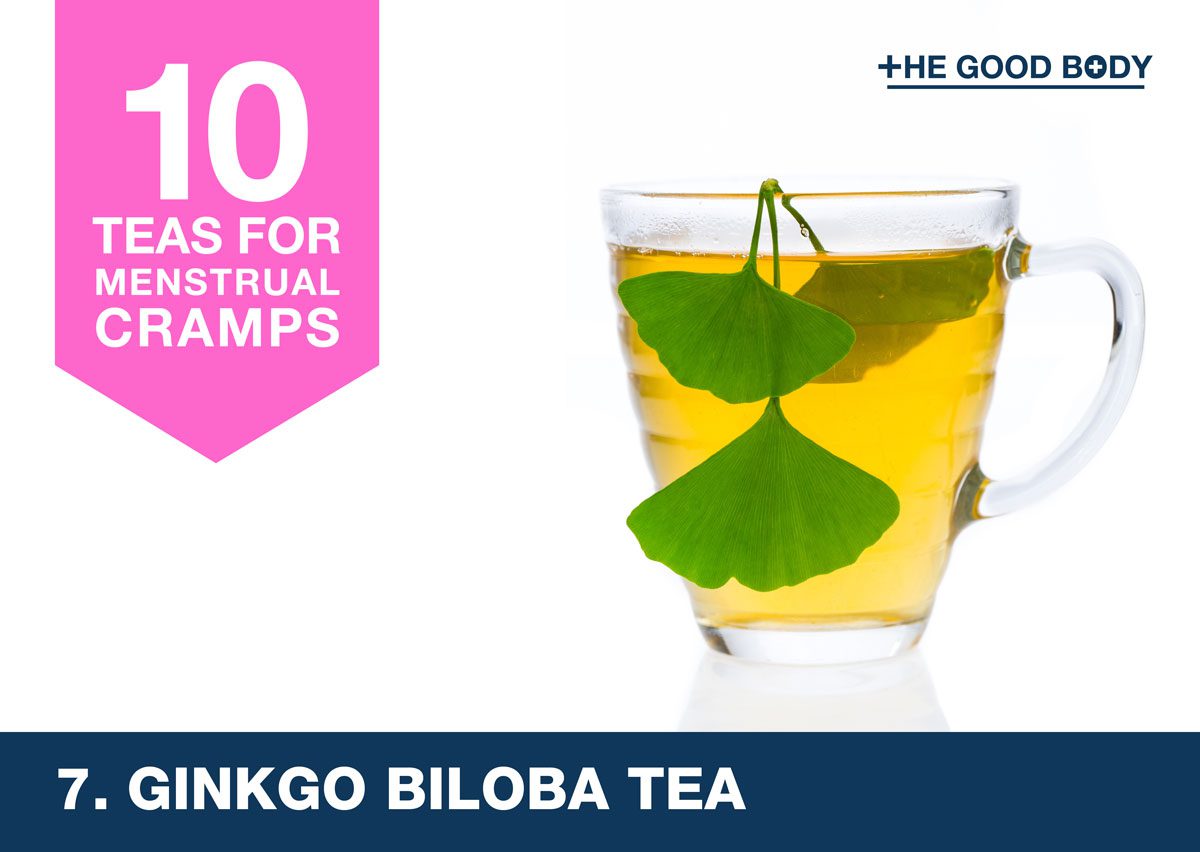
Ginkgo biloba has been used in traditional Chinese medicine for thousands of years and came into western culture a few centuries ago, mainly used to treat mental health conditions like Alzheimer’s disease and fatigue.
We’ve got great news if you’re suffering from menstrual cramps, it’s good for you too!
A randomized placebo controlled trial in Iran revealed just how effective it can be. 85 college women took part in a study to examine gingko as a treatment for pre-menstrual syndrome (PMS).
Participants either took 40mg of gingko biloba extract or a placebo three times a day.
Before the treatment, the severity of the symptoms of the gingko group was a whopping 34.8% and dropped substantially to 11.11% after the treatment.
When you compare this with the placebo group, the severity was high at 34.38% and only dropped slightly to 25.64%. With results like this, it’s a must-have when you’re in pain.
8. Cramp Bark Tea
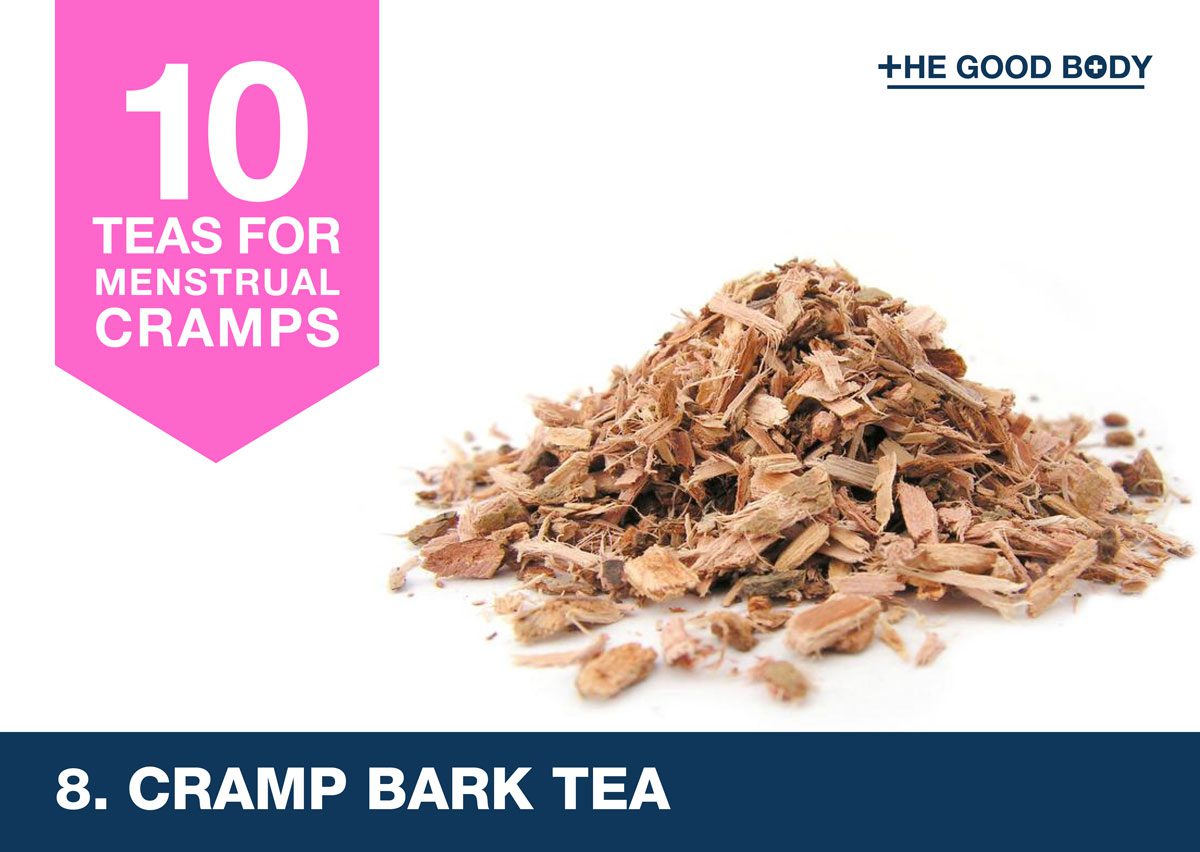
Despite cramp bark not being as well-known as the other teas on the list, it’s still great when you’re looking for a way to treat cramps.
This plant grows in North America and has historically been used as a medicine for treating many conditions, including migraine, asthma and bowel disturbance.
But today the bark and root bark is used as a herbal remedy to relieve cramps and muscle spasms during menstruation and also while pregnant.
9. Cinnamon Tea
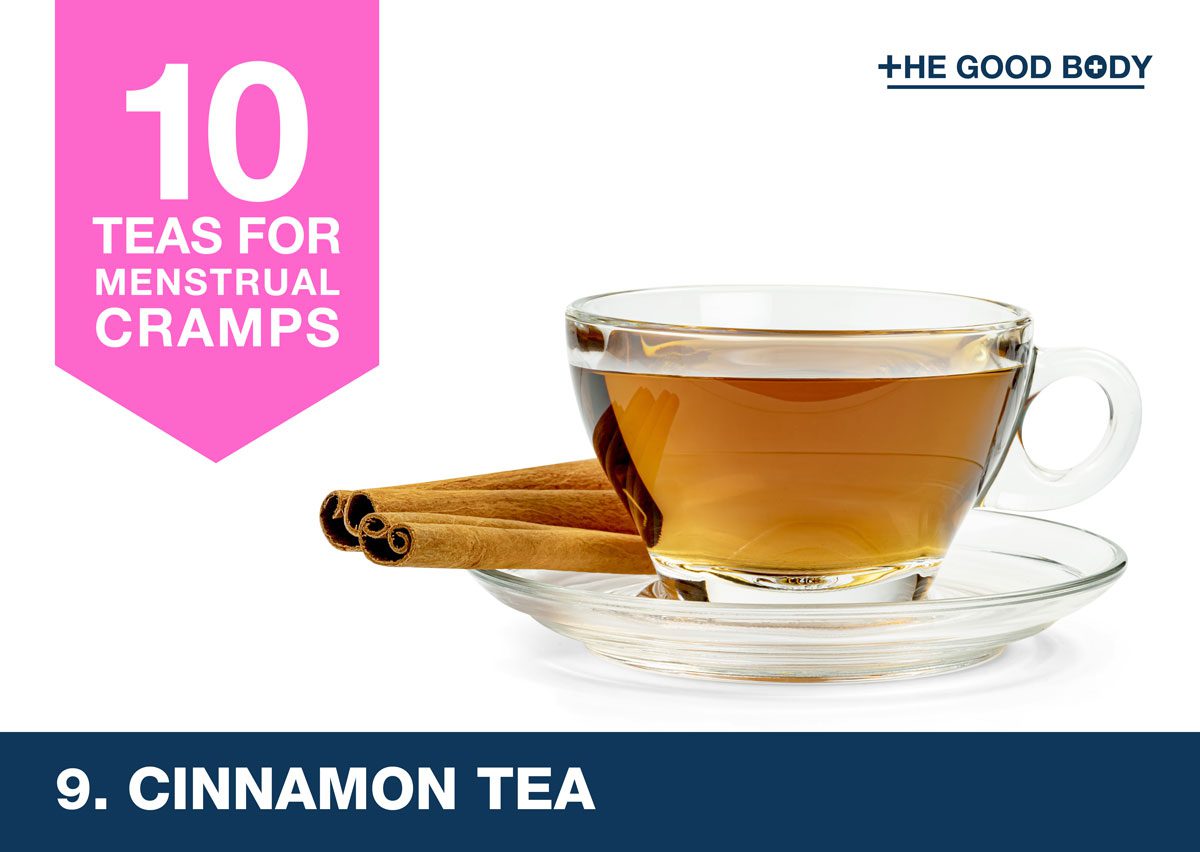
Cinnamon is a go-to tea if you’re suffering with an upset stomach and cramps.
It can break down fats in your intestinal tract and stimulate movement. This will eradicate the bloated feeling you’re experiencing and help your digestive system revert back to normal.
Research published in the Iranian Red Crescent Medical Journal found that cinnamon not only helps to reduce pain but also menstrual bleeding.
Health professionals concluded that it should be recommended as a safe and effective treatment for dysmenorrhea in young women.
10. Dandelion Tea
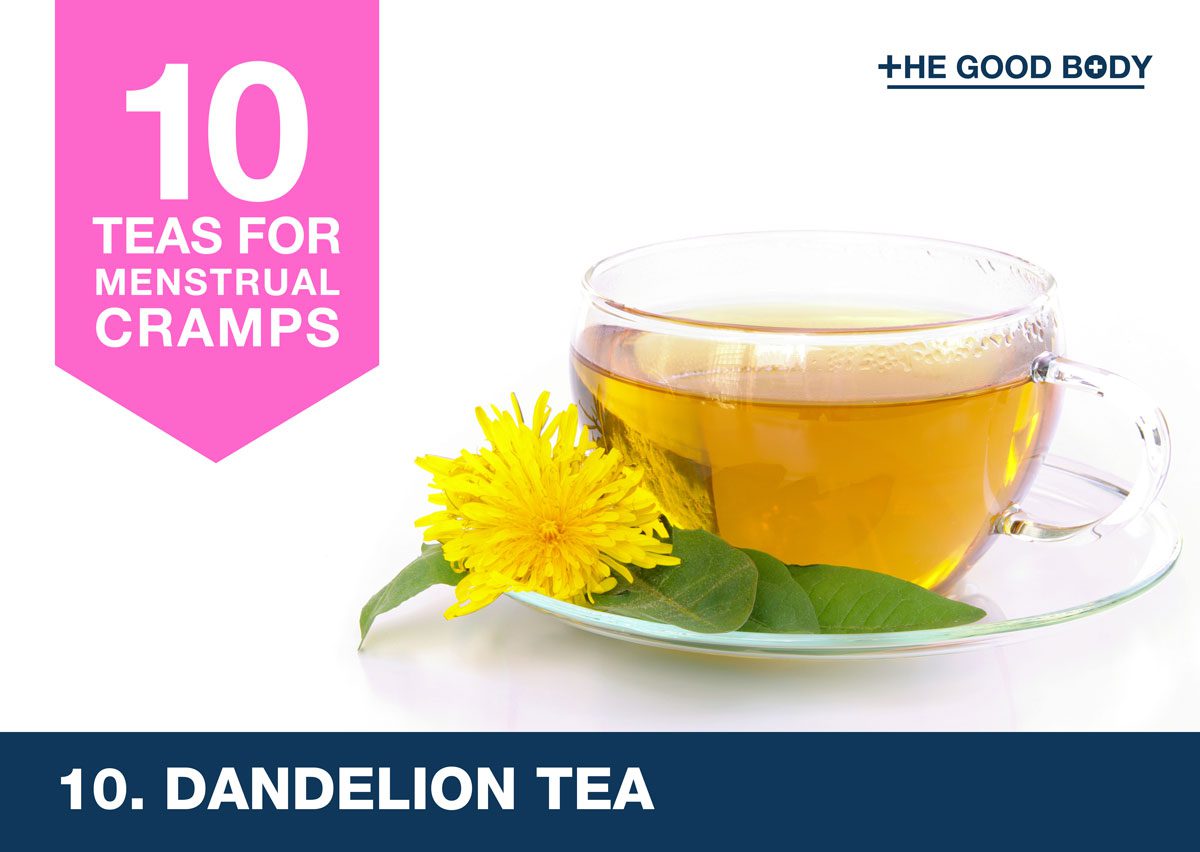
The gardeners among our readership might not be in love with dandelion (as it wreaks havoc in the garden!) but it does have some qualities that shouldn’t be overlooked, especially if you’re suffering from period cramps.
Firstly, it’s a non-toxic herb that has many natural anti-inflammatory compounds, a great aid when you’re crippled in pain.
Secondly, menstrual cramps can get a hell of a lot worse if there are any sort of imbalances when it comes to estrogen and progesterone.
Luckily for you dandelion root is high in plant estrogens and plays a crucial role when it comes to eradicating excess hormones in the body.
You’re going to want to pour a cup if you’re grappling with cramping!
Looking for other ways to cope with menstrual cramps? Why not try yoga? There are many health benefits just for women!


